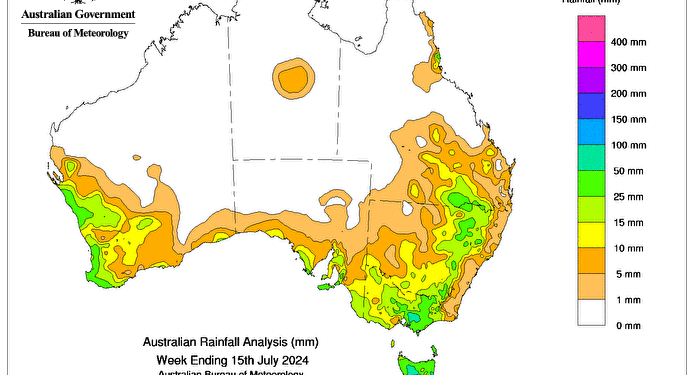Weather patterns bring substantial precipitation to eastern Australia and Tasmania
The Bureau of Meteorology’s weekly rainfall update for July 16, 2024, highlights significant weather events across New South Wales, Queensland, Victoria, and Tasmania. An inland trough and multiple low-pressure systems contributed to substantial rainfall, impacting various regions with totals ranging from 25mm to over 140mm.
Key Weather Events and Rainfall Totals
An inland trough traversed New South Wales, Queensland, and Victoria, bringing rainfall to western and central New South Wales and western Queensland. In the 24 hours to 9 am on July 9, these areas experienced rainfall totals between 25mm and 50mm. This system provided much-needed moisture to regions often in need of precipitation during the winter months.
On July 10, a low-pressure system in Bass Strait resulted in rainfall across parts of Victoria and Tasmania. Rainfall totals in the 24 hours to 9 am reached between 15mm and 50mm in western Tasmania and central and southeastern Victoria. This event was pivotal for replenishing water sources and supporting agricultural activities in these areas.
Further rainfall occurred on July 14 due to a low-pressure system off the east coast of Tasmania. This system delivered widespread rain to the state, with southern areas recording totals between 25mm and 50mm in the 24 hours to 9 am on July 15. These rainfalls were essential for maintaining soil moisture levels and supporting the region’s ecosystem.
Weekly Rainfall Distribution
Throughout the week, rainfall totals between 25mm and 50mm were recorded across Tasmania, the southwest coast of Western Australia, southeastern South Australia, central and northeastern Victoria, and isolated pockets of inland New South Wales and central Queensland. Notably, weekly totals exceeding 50mm were observed in southern, eastern, and central Tasmania, as well as central Victoria.
The highest weekly total was recorded at Mount Baw Baw in Victoria, with an impressive 140mm. This location also reported the highest daily total of 89mm in the 24 hours to 9 am on July 10, highlighting the intensity of the rainfall event in this region.
Implications for Agriculture and Environment
These rainfall events are crucial for the agricultural sector, providing much-needed water for crops and pastures. The moisture supports crop growth, enhances soil health, and replenishes water supplies essential for livestock. Additionally, the rainfall helps maintain ecological balance, supporting native vegetation and wildlife habitats.
Outlook
As we look ahead, it is essential to monitor further developments in weather patterns and their potential impact on various regions. Continued rainfall will be beneficial for sustaining agricultural productivity and supporting environmental health.






